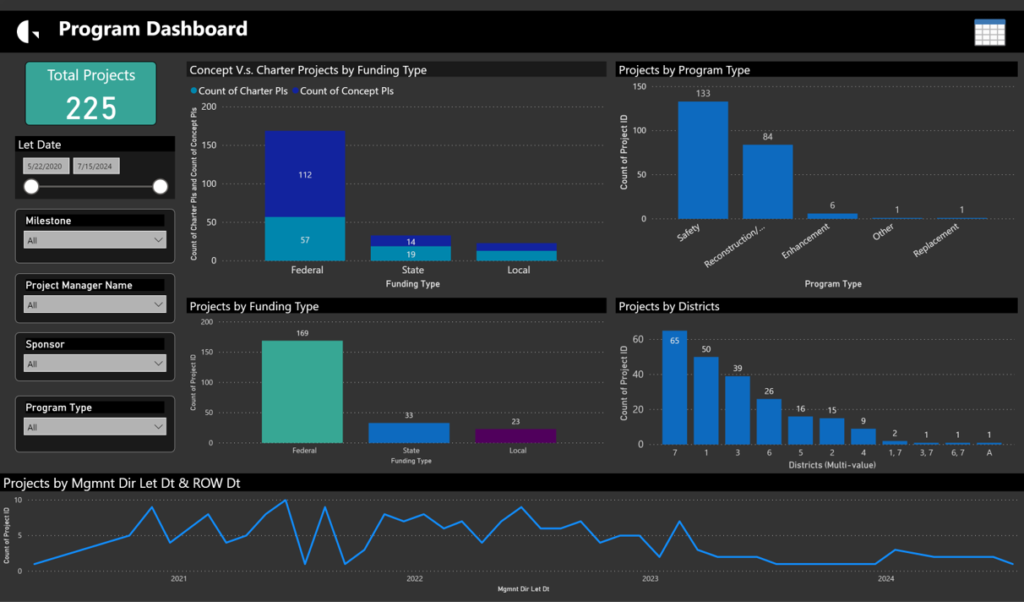What started as a simple napkin sketch is now a technical, data-driven process where we’re able to alert our client—the Office of Program Delivery at the Georgia Department of Transportation (GDOT)—about potential issues we see now that will affect their bottom line in the future. To explain how our team created this new and innovative data analytics platform, I’ll need to explain how we got here in the first place.
In 2015, Georgia Gov. Nathan Deal signed the Transportation Funding Act (TFA) into law, which increased GDOT’s funding and program projects by 50%. As a result, the state Legislature tasked GDOT with using the increased funding to deliver more projects and faster while maintaining current state employee levels. One of the many ways Georgia is addressing this challenge was to select Gresham Smith to manage its Traffic Operations and Safety program.
For this project, we serve as a management extension of GDOT’s Office of Program Delivery, assisting our client with delivering on $1 billion in combined projects over a five-year contract. At any given moment, we’re managing about 225 active projects, each with a number of key data points that we track that reveal a project’s health.
In our work, we are evaluated by our ability to meet major project milestones, such as schedule and cost. Our primary goal is to help our client deliver projects to construction but we also help improve their processes and delivery efficiencies. That means we need to keep the overall programs and individual projects on time and on budget—or better yet ahead of schedule and under budget.
Rather than just simply track and report on basic project milestones, our data analytics platform allows us to predict where adjustments need to be made before they derail a project.

Caption: An example program dashboard from our data analytics program.
Measuring a Project’s Health
Using the data from our platform, we’re able to assign every project with a project health score (“A” through “F”). In effect, it tells us how healthy a project is in terms of its cost, procurement and schedule. Those are the key metrics—and potential problem areas—for every project that comes across our desks. We use these metrics to see where the potential delivery risks could come from so we and the client are able to make adjustments accordingly.
For instance, if we know a project has a low health score in an early phase of the procurement process, we can communicate and inform GDOT to partner with them to find solutions to those risks. This allows them to consider what other projects can be shifted to an earlier fiscal year budget to maximize overall funding, which ultimately saves GDOT and taxpayers time and money.

Caption: A chart showing key metrics for projects, including the project’s health score.
Our platform has also helped us find additional efficiencies in the procurement process. In the past, these projects typically had three phases of procurement before a project was let for construction. One of the first items our data showed is that in a number of projects we could easily reduce the procurements needed from three to two, allowing time savings to deliver projects faster. What used to take two and a half years now takes eight to 10 months.
Connecting the Dots
As we look ahead to future improvements, we are turning our focus to the construction process and the use of supplemental agreements. These agreements must be used when design changes need to be made after a project has been let for construction. Clearly, any supplemental agreements drive up the cost and push back the schedule. As we analyze what’s driving the need for these changes, we’ll be better prepared to mitigate those risks in the future.
At the end of the day, what looks like a lot of numbers in a spreadsheet is actually an important tool for improving the quality of life for all Georgians. Our innovative partnership with GDOT is creating positive economic impacts by efficiently and expeditiously delivering projects that improve safety and traffic flows—and ultimately save lives.